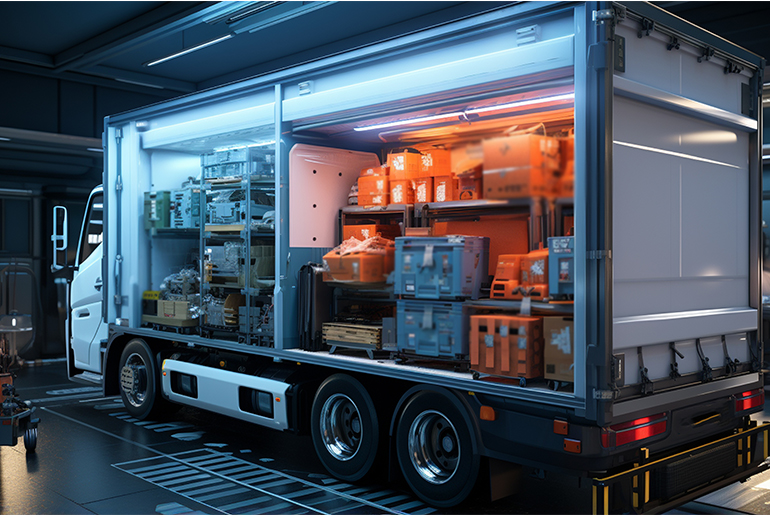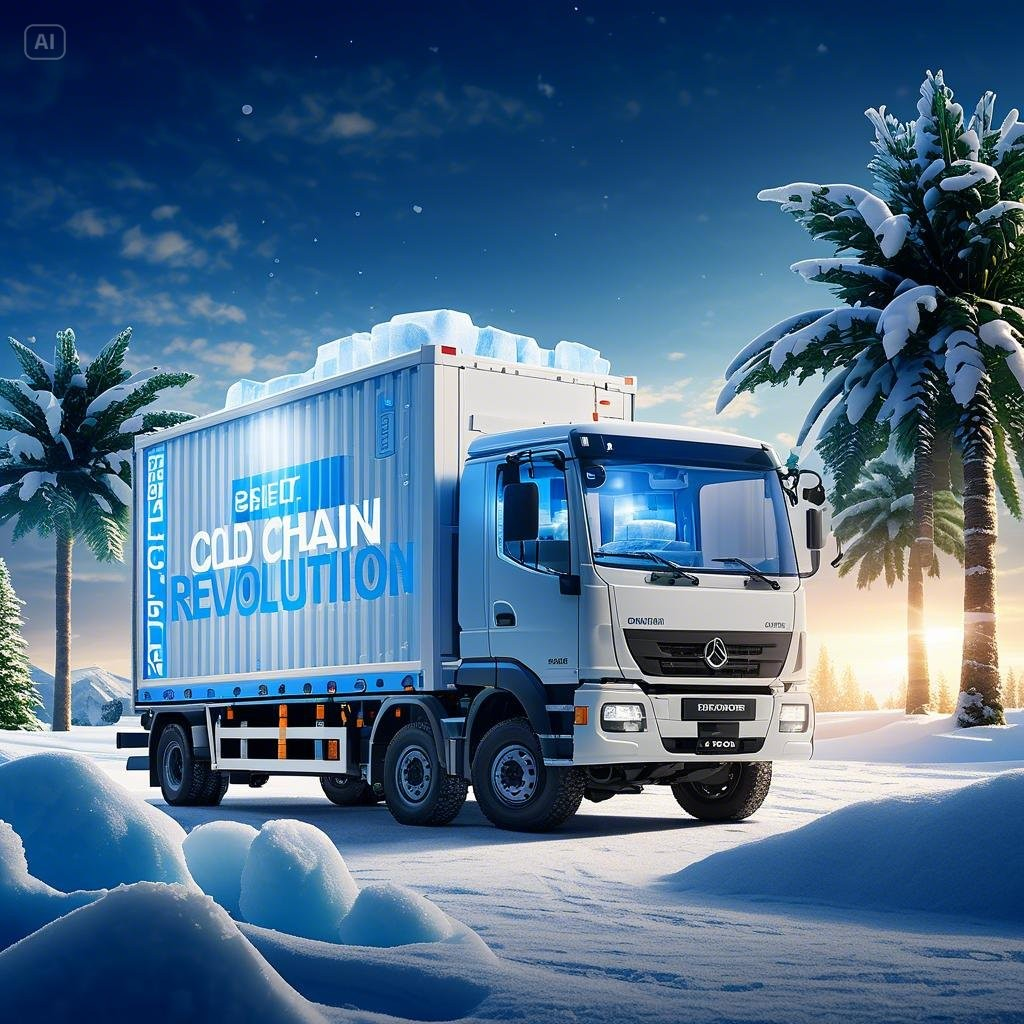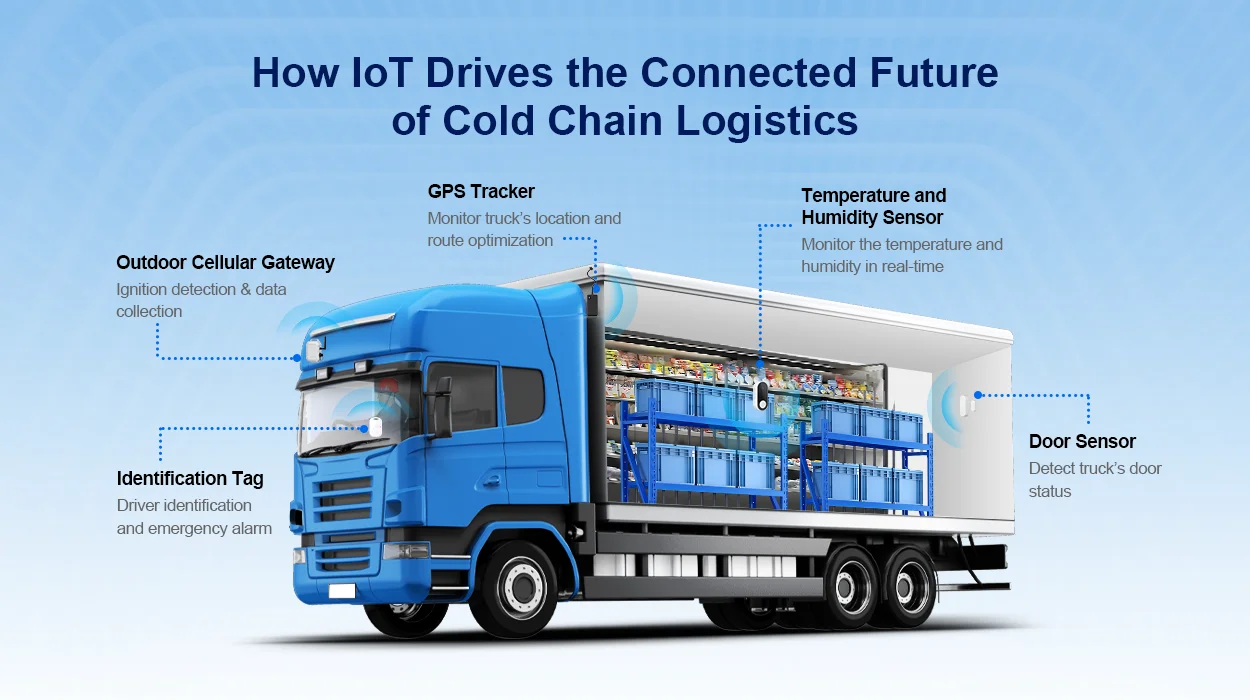Smart Cold Chain Systems are now powering 70% of Gulf food transport, marking a trans formative shift in the way perishable goods are handled across the region. This advancement is revolutionising food logistics, making transportation more efficient, secure, and climate-friendly.
The rise of Smart Cold Chain Systems in Gulf countries such as the UAE, Saudi Arabia, Qatar, Kuwait, Bahrain, and Oman has significantly reduced food spoilage, improved shelf life, and enhanced food safety. With rapid urbanisation, rising temperatures, and the need for fresher imports, smart cold logistics have become not just an option but a necessity.
What Are Smart Cold Chain Systems?
Smart Cold Chain Systems refer to an advanced network of refrigerated transport, warehousing, and real-time monitoring technologies that maintain the right temperature for perishable food from source to shelf. Unlike traditional cold chains, smart systems include IoT sensors, GPS tracking, cloud-based temperature records, and automated alerts.
These technologies allow food handlers and logistics companies to detect issues like temperature fluctuations, delays, or equipment failure in real time, minimising product loss.
Why the Gulf Region Needs Smart Cold Chains
The Gulf’s hot climate makes it especially vulnerable to food spoilage during transport. Temperatures often cross 45°C in the summer, creating challenges for preserving fresh produce, meat, dairy, and pharmaceuticals.
With over 85% of food being imported, Gulf nations rely heavily on a safe and reliable cold transport infrastructure. This has prompted governments and private sectors to invest in Smart Cold Chain Systems, which offer accuracy, automation, and visibility that traditional methods cannot match.
The demand for smart solutions surged post-COVID, as consumers became more concerned with hygiene, shelf life, and food quality. In response, the food industry across the Gulf upgraded their systems to prevent losses and build customer trust.
70% of Gulf Food Transport Now Uses Smart Cold Chain Systems
Recent industry data shows that 70% of all food transport in the Gulf region is now supported by Smart Cold Chain Systems. This shift is driven by:
- Growing demand for imported fresh and organic food
- Pressure from food safety regulations
- The need for transparency and traceability in the supply chain
- Technological advancements in AI and IoT devices
Companies like Almarai, Agthia, Americana, and Lulu Group have embraced smart logistics, integrating sensors and cloud monitoring into their transport fleets. These innovations have cut losses by up to 40%, improved delivery times, and enhanced customer satisfaction.

Key Benefits of Smart Cold Chain Systems in the Gulf
1. Real-Time Monitoring:
Smart systems use IoT sensors that send real-time data about temperature, humidity, and location. If there’s a sudden rise in temperature, alerts are sent instantly to take action.
2. Reduced Spoilage:
With accurate climate control, food waste caused by spoilage during transit has decreased significantly estimated by up to 30% in some logistics networks.
3. Higher Efficiency:
Fleet operations become more predictable. AI systems analyze traffic, delivery windows, and warehouse conditions to optimize routes and delivery timing.
4. Compliance and Reporting:
Smart cold chains help companies meet GCC food safety regulations. Automated reports are stored in the cloud for easy audit access.
5. Cost Savings:
Though initial investment in Smart Cold Chain Systems is high, the long-term savings from reduced waste, optimized fuel usage, and fewer customer complaints make it a profitable choice.
Government Support and Regulatory Push
Governments across the Gulf are encouraging industries to adopt Smart Cold Chain Systems by offering grants, tax exemptions, and infrastructure support. For example:
- The UAE National Food Security Strategy 2051 promotes cold logistics for stable food imports.
- Saudi Arabia’s Vision 2030 supports investment in AI-powered logistics.
- Qatar’s Logistics Master Plan includes development of smart cold warehouses and transport routes.
These national plans have accelerated the integration of technology into the food transport industry.
Challenges in Full Adoption
Despite the success, 30% of food transport in the Gulf still uses traditional systems. The challenges include:
- High setup and maintenance cost
- Limited access to trained technicians and engineers
- Incompatibility with older trucks and warehouses
- Resistance from small-scale distributors
However, experts believe that as digital logistics become more cost-effective, adoption will likely cross 85% within the next five years.

The Road Ahead: Toward 100% Smart Cold Chains
The Gulf region’s goal is not just to import food safely but to become a global leader in smart food logistics. As demand for frozen and fresh goods rises with growing populations and tourism, Smart Cold Chain Systems will play a central role in the region’s food security.
With innovations in AI, blockchain for traceability, and autonomous delivery, the future of cold chain logistics looks highly promising. Companies that delay adoption risk falling behind in quality, compliance, and customer satisfaction.
Final Thoughts
The shift toward Smart Cold Chain Systems marks a positive turning point in Gulf food logistics. Powering 70% of the region’s food transport, these systems are reducing waste, improving safety, and ensuring quality food reaches consumers fresher and faster.
In the coming years, as infrastructure improves and technology becomes more affordable, the Gulf may well become a benchmark for smart logistics in hot climates.
Do follow Gulf Magazine on Instagram
Also read – 88 Port burger in Al-Khobar: A Must-Try Spot for Burger Lovers



